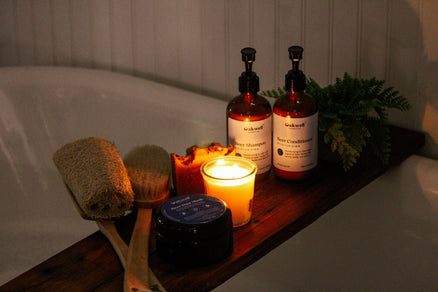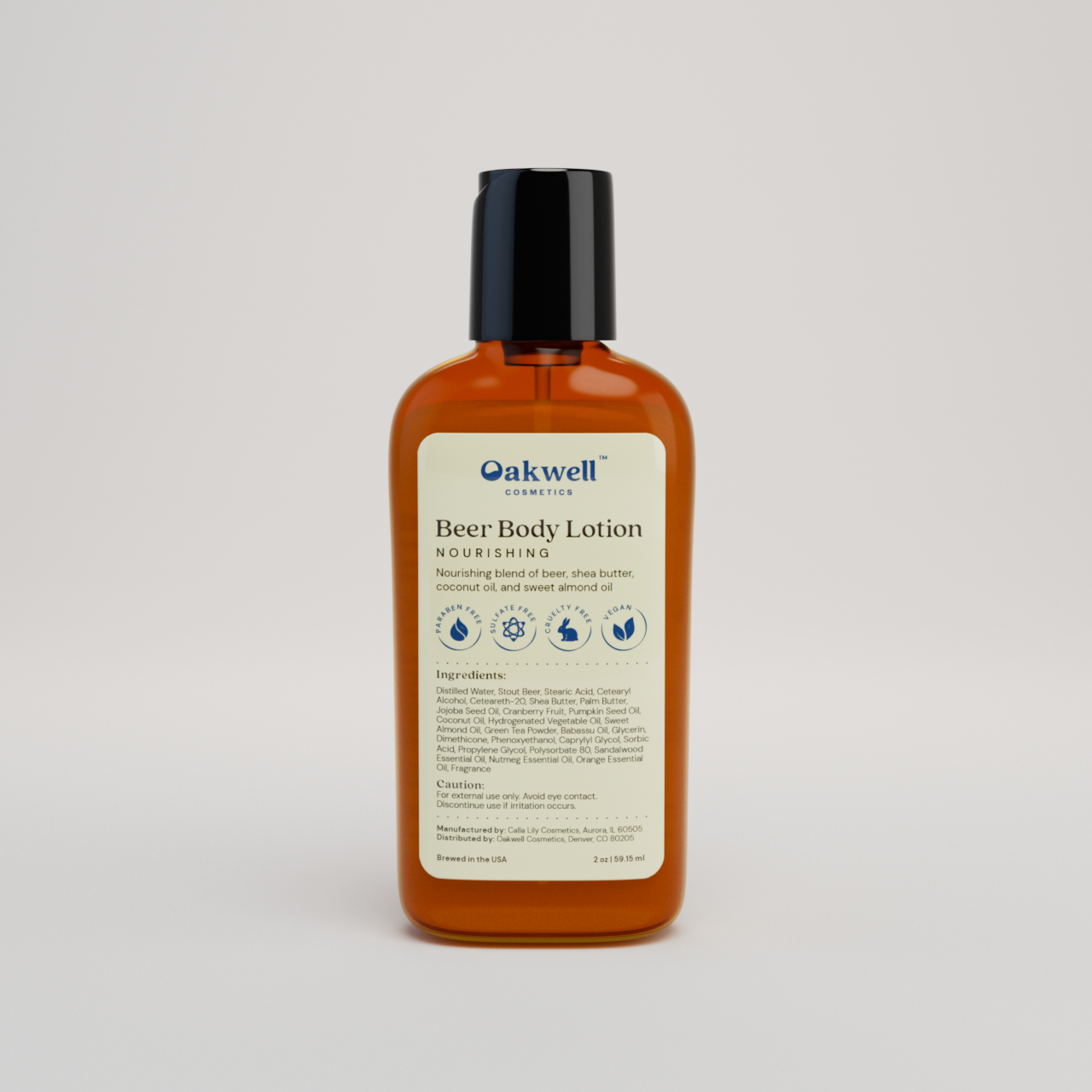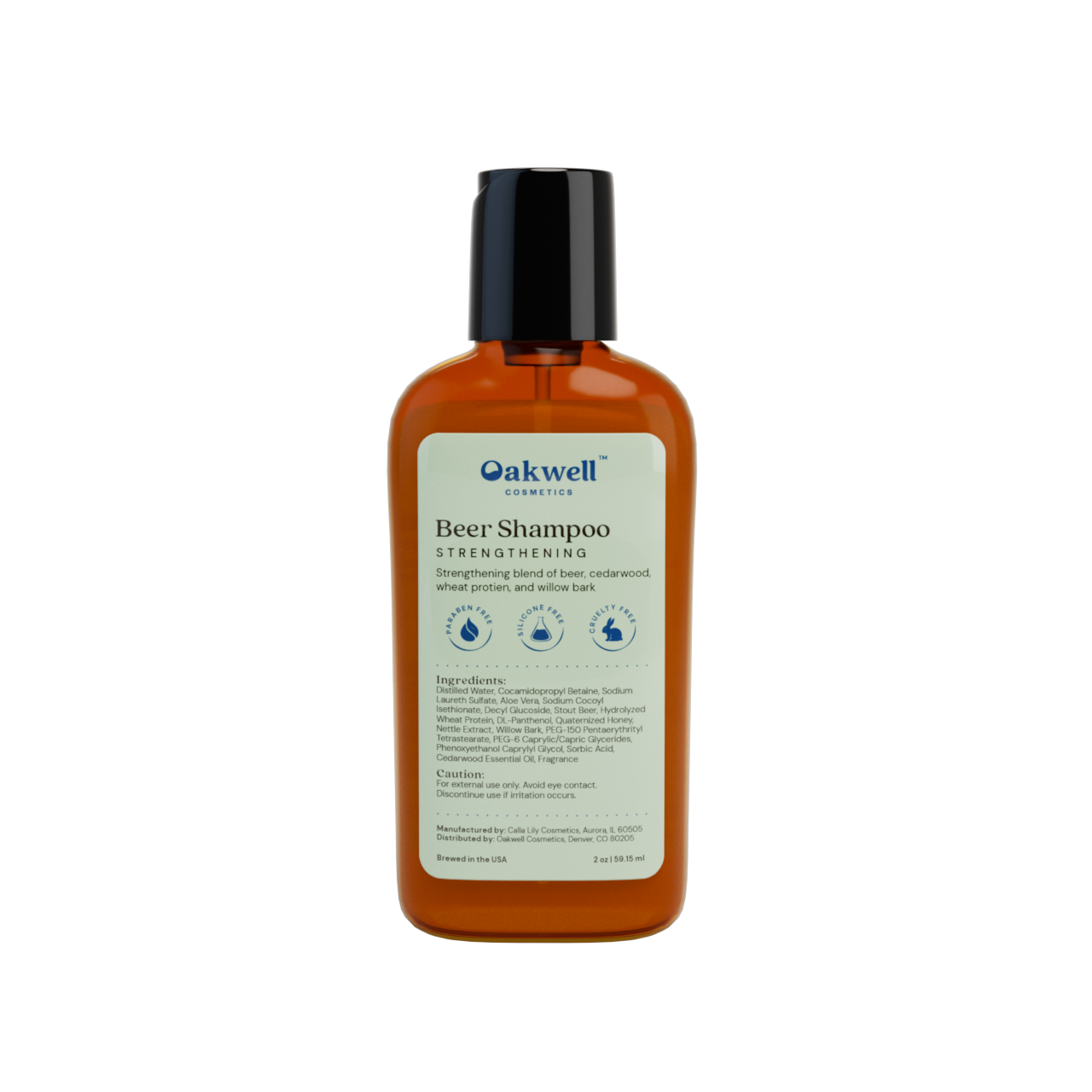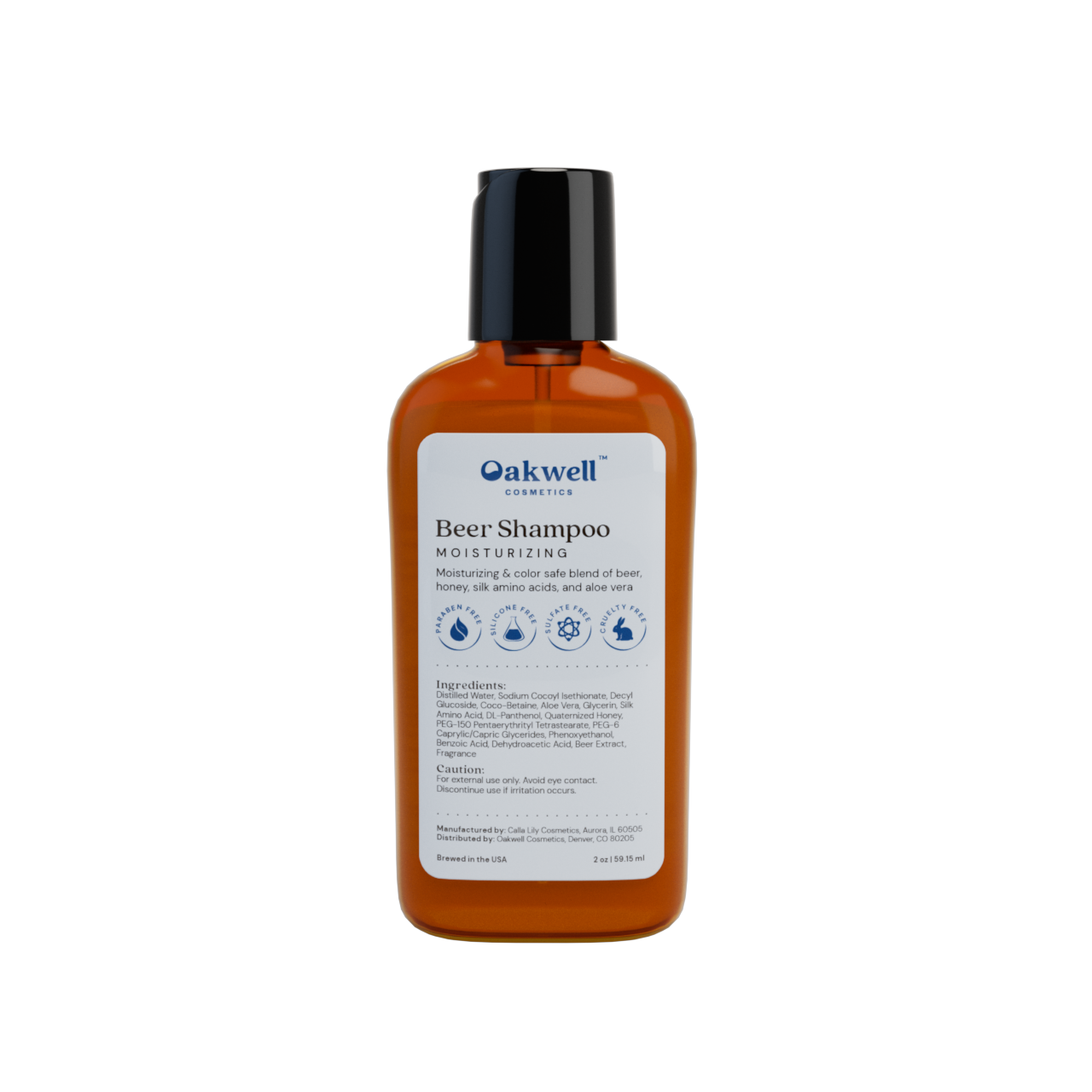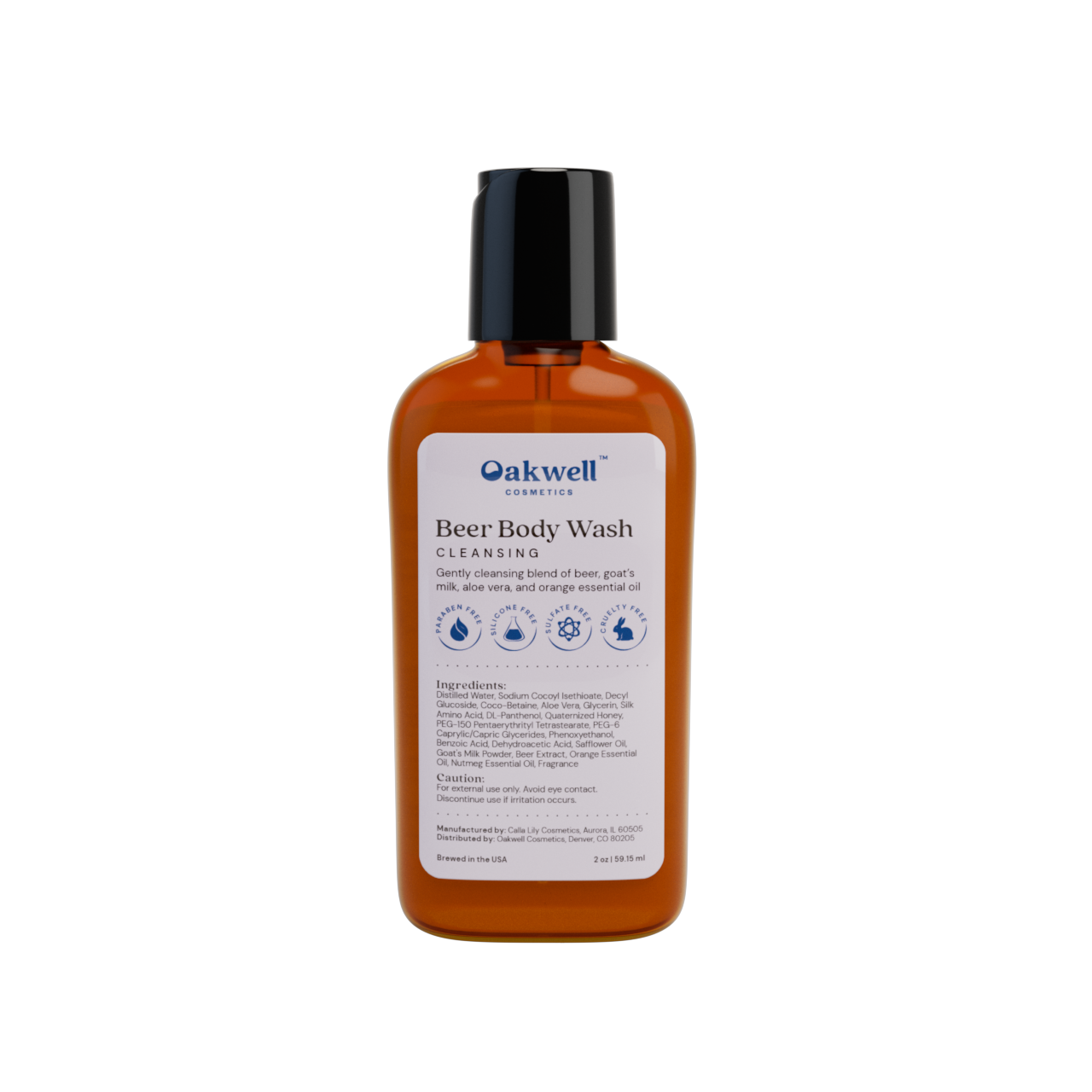Winter Bath: Tips & Accessories for a Cozy Experience

When the temperature drops, a warm winter bath can feel incredibly soothing. Beyond being cozy, a bathing routine can also support relaxation, better sleep, and healthy skin throughout the season.
The key is taking a winter bath that supports clean, hydrated skin. Below, Dr. Hannah Kopelman, Chief Dermatologist at DermOnDemand offers her insights on the best winter bathing temperature, frequency, and moisturizing tips. We also share our favorite winter bath accessories for a cozy experience at home.
Why take baths in winter?
Not only does a bath in winter feel cozy, but taking warm baths can also help promote muscle relaxation, better sleep, and healthier skin. Cold baths in winter may also help support better muscle recovery, mental health, immune system function, and athletic performance; however, this research is limited.
Helpful Winter Bath Tips
Make the most of your winter bath with helpful tips and our favorite accessories for a self-care experience.
Take Cold or Warm Baths
Whether you’re looking to take cold or warm baths in winter, both can offer benefits.
Dr. Kopelman suggests taking lukewarm baths, not hot ones. While it may feel great to soak in really hot water during winter, this can strip away natural protective oils and quickly dry your skin out. However, lukewarm water helps cleanse without depleting moisture that can help you maintain soft, hydrated skin.
If you’re curious about taking cold baths or plunges in winter, Dr. Kopelman says this is generally safe for most people. Many people say cold baths help with mood and recovery, but it’s important to consult your healthcare professional if you have any medical conditions or trouble regulating body temperature.
Don’t Overbathe
The best bathing frequency in winter depends on your individual skin type, lifestyle, and climate. Dr. Kopelman explains that one 10-minute warm bath or shower per day is ideal for most people. In very dry climates or during a skin condition flare, you may want to bathe every other day or every few days instead.
The key is to find a bathing routine that supports your skin by balancing gentle cleansing and consistent hydration. Pay attention to how your skin responds, and adjust the frequency as needed. If you’re unsure what’s best for you, consult a dermatologist for personalized advice.
Prioritize Skin Hydration
Dr. Kopelman says the most important step for healthy winter skin happens after your bath. She recommends applying a thick moisturizer as soon as you finish your bath while the skin is still damp. “I do this myself during the winter because it really locks in hydration and helps prevent that classic winter itch.”
Along with using the right water temperature and finding the best bathing frequency for your skin, sealing in moisture right away helps keep your skin barrier strong and hydrated all season long.
Use Winter Bath Accessories
Winter bath accessories can help set the mood and support healthy skin.
We love these products for a cozy, therapeutic winter bath at home:
- Beer Body Wash - A gentle, creamy cleanser blend of beer’s natural ingredients, goat’s milk, aloe vera, and orange essential oil
- Honey Lavender Soap Bar - A refreshing soap bar made with honey, lavender, bergamot, purple Brazilian clay, and blonde ale to support hydration and healthy skin
- Beer Body Lotion - A hydrating blend of shea butter, coconut oil, sweet almond oil, and beer’s natural ingredients
- Calming Beer Bath Salts - A calming blend of minerals, herbs, and essential oils
- Waffle Bath Robe - A lightweight, full coverage robe made with 100% cotton and an adjustable belt for a comfortable fit
- Relaxing Cedarwood & Amber Candle - A non-toxic, 100% soy wax candle that creates a warm, relaxing atmosphere

Winter Bath: FAQs
How often to take a winter bath?
In winter, you can take a warm or cold bath one to seven times weekly, depending on your climate, skin type, and lifestyle. The best frequency varies from person to person. Pay attention to how your skin feels and responds, and adjust your bathing routine to ensure your skin stays clean, comfortable, and well-hydrated throughout the season.
How to take a bath during winter?
To take a bath during winter, decide between a warm and cold soak. Then, gather winter bath accessories, like calming bath salts, a cozy robe, and a moisturizing lotion. Limit your bath to about 10 minutes and keep it to once daily or every few days, depending on your skin’s needs.
Is it okay to take cold baths during winter?
It’s usually okay to take cold baths during winter if you don’t have any underlying health concerns or trouble regulating your body temperature. For most people, cold baths are generally safe and may help boost mood, promote muscle recovery, and improve circulation. However, it’s best to check with your healthcare provider before starting regular cold plunges to ensure it’s a good routine for you.
Winter Bath: Conclusion
A winter bath can be both cozy and beneficial when done the right way. By choosing a comfortable water temperature, limiting your soak time, and moisturizing immediately afterward, you can enjoy a calming ritual without drying out your skin. Whether you prefer a relaxing warm soak or an energizing cold plunge, listening to your skin and following dermatologist-approved tips will keep your skin clean and hydrated this winter.
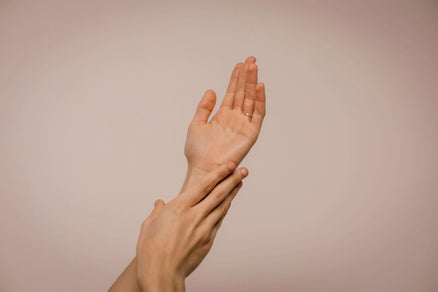

Become a part of our community and be the first to learn all there is to know about Oakwell


